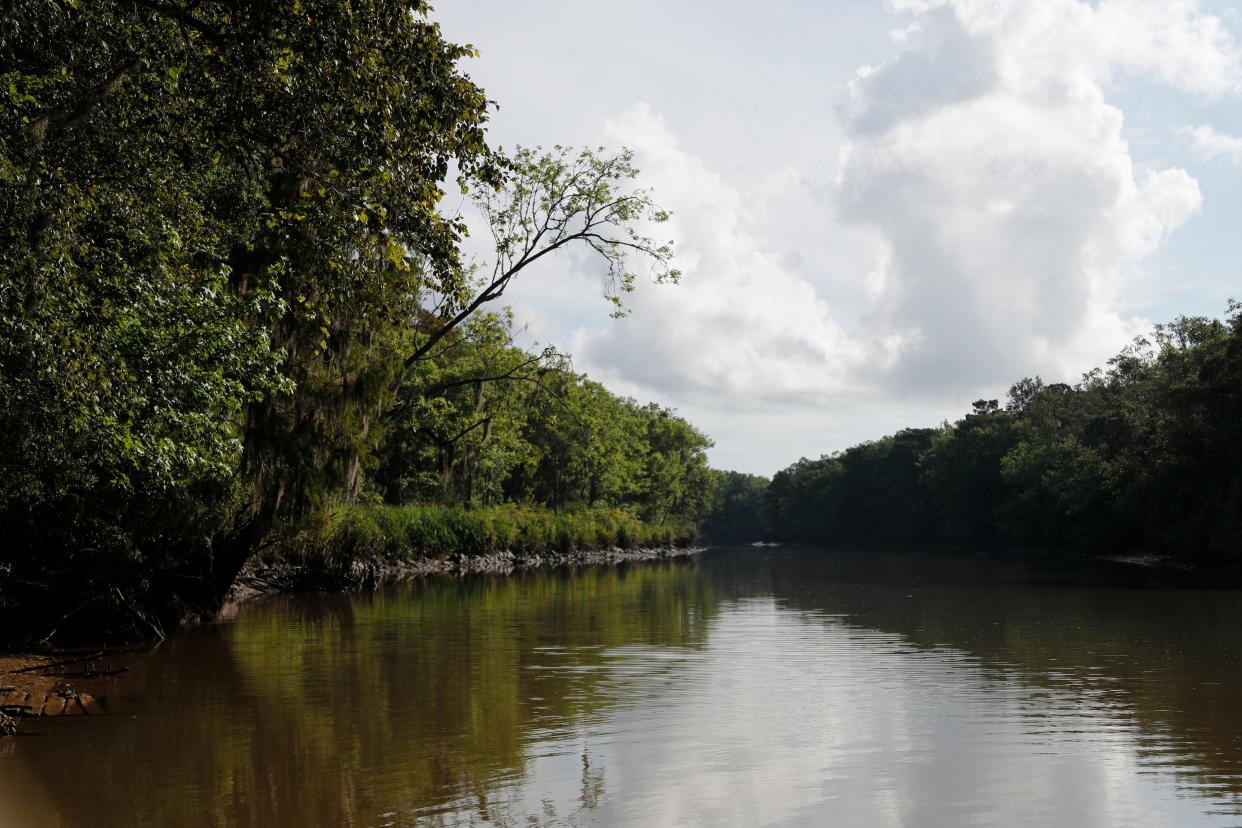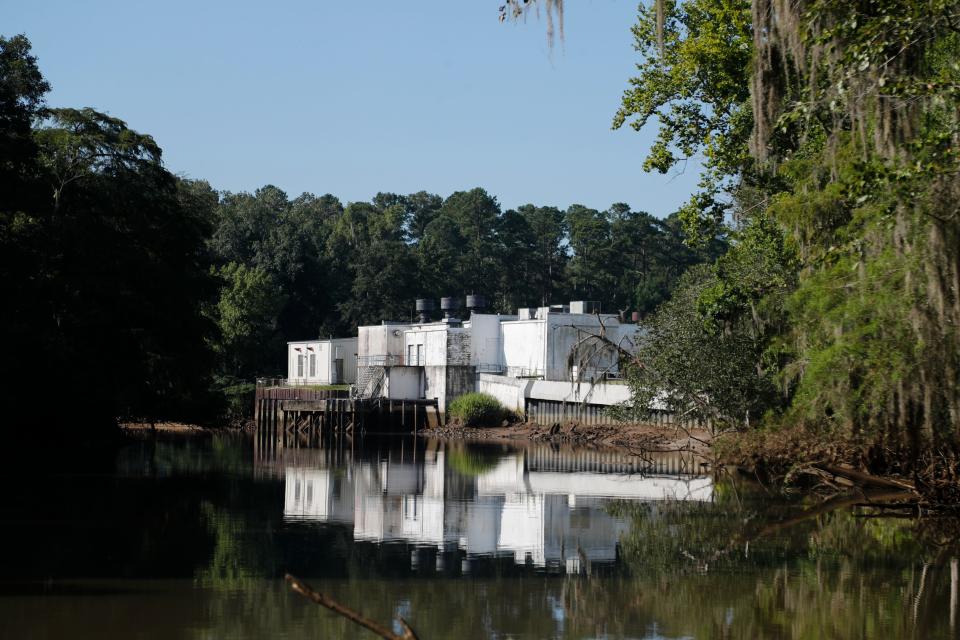'No time to respond': Proposed Effingham development threatens regional drinking water supply

A proposed industrial park in Effingham County is located just about one mile upstream of Savannah's drinking water intake, and water experts argue the destruction of wetlands and industrial processes could spell disaster for the water source serving Chatham, Bryan and Effingham counties.
On August 2, the Effingham County Board of Commissioners unanimously voted to rezone 130 acres of agricultural land for industrial development along Abercorn Creek, a small tributary of the Savannah River, at a location just a mile or so upstream from the city's Abercorn Creek drinking water intake.
'This is a crisis': Proposed Effingham industrial park threatens tri-county drinking water
Savannah Riverkeeper: Deepening 'changing the ecosystem’ as saltwater intrusion moves upstream
The applicant, Jacksonville-based development firm Chesterfield LLC, plans to build warehouses totaling 1.1 million square feet on about 130 acres, a third of which cannot be developed because of wetlands protections.
Where is drinking water coming from?
Abercorn Creek serves as the primary, and nearly exclusive, drinking water source for the city of Savannah as well as Chatham, Bryan and Effingham counties.
According to Savannah Riverkeeper Tonya Bonitatibus, Savannah used to get almost all its drinking water from pumping groundwater, but over the years over-pumping has caused the aquifer to go salty.
"There isn't a question, there is no choice in the matter — Savannah doesn't have other drinking water sources," Bonitatibus said of Abercorn Creek.
Emergency response time
One of the largest issues with the location is proximity, according to Bonitatibus. The proposed warehouse development is so close to the drinking water intake it provides no response time in case of a disaster.
"Numerous times throughout my career I have stood on a bridge after there's been a spill and called the utility department downstream — whether it was Burke County, City of Augusta, City of Savannah — and said 'turn your drinking water off now, there's a spill coming.'"
In Burke County, it was an aluminum sulfate spill. Other times she has worked on diesel spills. For all these cases, Bonitatibus said water treatment centers must be shut down or it can cause hundreds of thousands of dollars in damages to the systems quickly.
With less than a mile of space between the warehouses and water intake, Bonitatibus said there's no time to react. Moreover, she said that communication between counties could slow down response times.
Laura Walker, an environmental administrator with the City of Savannah's Water Resources Department, echoed Bonitatibus' concerns. She said at the commissioners' meeting that although engineers had created detention pods to hold contaminants, these could be overwhelmed by storms or floods and lead to major pollution with "no reaction time whatsoever" for the more than 400,000 customers relying on Abercorn Creek's drinking water.
Chesterfield LLC declined to comment for publication but referred Savannah Morning News to its comments at the Board of Commissioners meeting. Chance Raehn, Chesterfield LLC developer, said at the meeting that the land grades inward and the detention ponds will be located downstream of the water intake facility.

Buffer and wetland protections
The proposed development is planning to slash wetlands and buffers along the waterside.
According to a variance request document, Effingham County's Planning Board unanimously approved reducing buffers — vegetated areas next to waterways — from 300 feet to 150 feet on the parcels which have frontage on Abercorn Road and at the residential subdivision of Abercorn Acres. They also approved a 20-foot earthen berm — a type of raised bank — in upland areas which would help prevent flooding, and with visual screening and noise reduction.
More: EPA releases new, preliminary guidelines for 'forever chemical' contamination
On the eastern boundary which faces municipal land, the buffer will be reduced from 300 feet to 25, the legal minimum in Georgia.
Removing vegetation and adding pavement that can't absorb water along the creek will likely make the area more vulnerable to floods and greatly reduce the environment's ability to keep drinking water clean and prevent flooding along the creek.
"Wetlands are powerful tools for protection; We call them the kidneys of the landscape," said Todd Rasmussen, a hydrologist at the University of Georgia's Warnell School of Forestry and Natural Resources.
Rasmussen studies contaminant transport: how exactly pollutants make their way into water, and where they go from there.
Wetlands and buffers filter out pollution incredibly efficiently, Rasmussen said. Whether it be chemicals or nutrient runoff from agriculture, he said studies show time and time again that water comes out cleaner after passing through wetlands.
"We call it natural infrastructure," Rasmussen said. Instead of building expensive treatment plants, it's cheaper to spend money protecting natural resources that get the job done.
Pathways for pollution
"There's so many pathways from a site to a stream," Rasmussen said. While critical damage to drinking water may seem unlikely or unimaginable to some, Rasmussen has worked with water pollution throughout Georgia and the country.
Years ago in Athens, he said J&J Chemical Co., which manufactures blue, gel-like toilet bowl cleaner stamps, had a chemical fire, and the runoff from the water used to quell the fire entered the streams and groundwater and turned the Oconee River an iridescent, Smurf blue for years after. He also noted how fuel spills and de-icing chemical spills from Hartsfield-Jackson International Airport in Atlanta polluted drinking water downstream in the Flint River.

When it comes to water intake systems, Rasmussen said it's pennies on the dollars to prevent the pollution compared to trying to clean it up. And when that happens, the burden and cost are shifted onto taxpayers and municipalities rather than polluters.
According to Bonitatibus, there are plenty of examples of how pollution can enter the river, like diesel spills from trucks. Similar to the Athens fire, Bonitatibus recalled a 2014 warehouse fire at the Georgia Port Authority's Ocean Terminal which housed rubber at the time, and said that had that warehouse been located at the proposed site along Abercorn Creek, "you're talking about catastrophic damage to that drinking water intake instantly." She noted that firefighting foam is a known source of PFAS, a class of chemicals emerging as a known carcinogen that the U.S. Environmental Protection Agency is working to regulate.
What's to come for wetlands
Chesterfield LLC will have to go through the Army Corps of Engineers for an Approved Jurisdictional Determination to see whether the affected wetlands fall under federal protections.
To change the buffers along Abercorn Creek, the developers will have to receive a buffer variance approved by the Georgia Environmental Protection Division. A public notice will be issued and posted at bit.ly/3bDNbuh, followed by a 30-day public comment session. Neither the Army Corps determination nor the buffer variance had been applied for at time of publication.
Marisa Mecke is an environmental journalist. She can be reached at mmecke@gannett.com or by phone at (912) 328-4411.
This article originally appeared on Savannah Morning News: Experts: Effingham County proposal threatens regional drinking water

